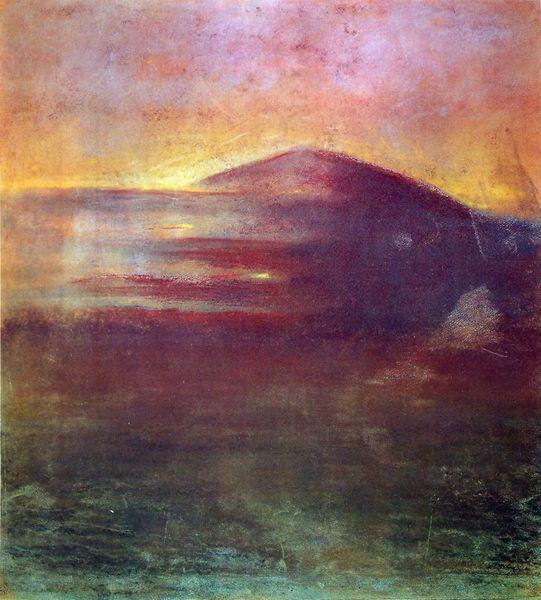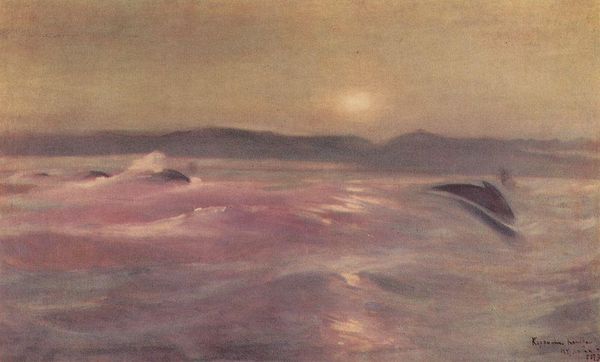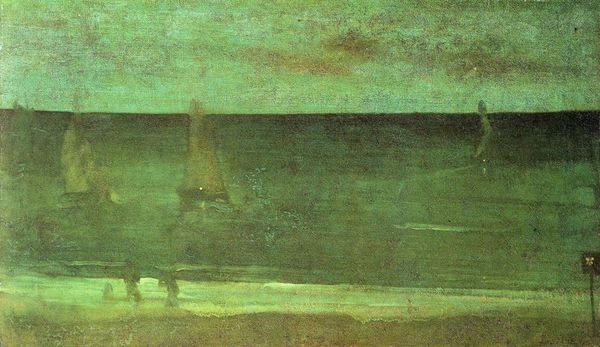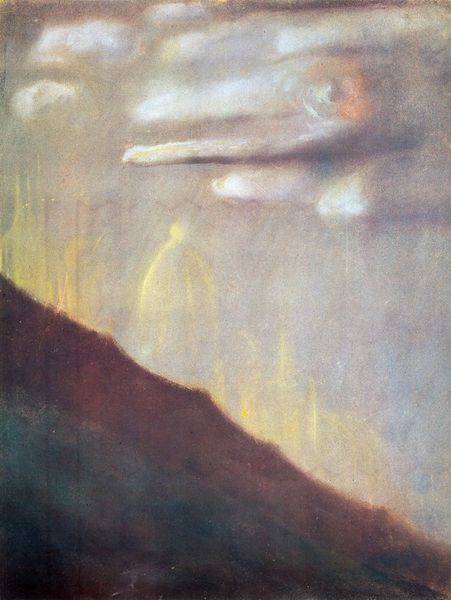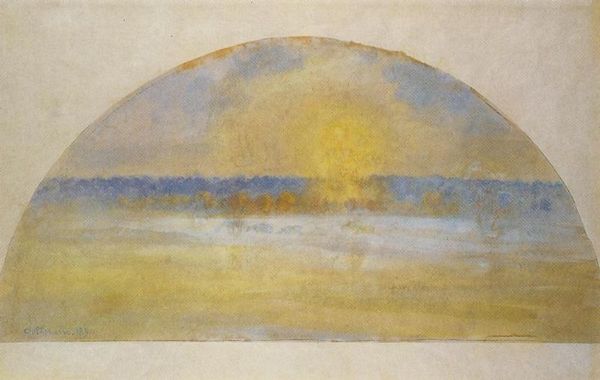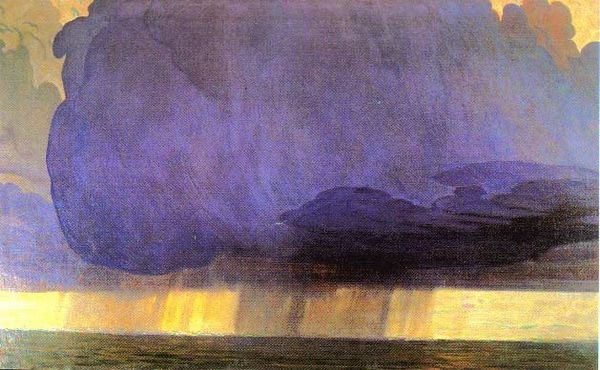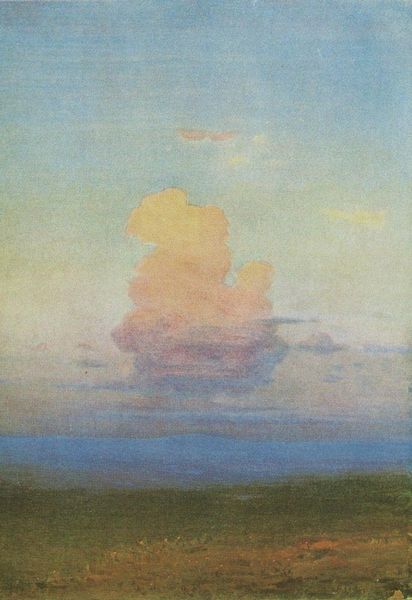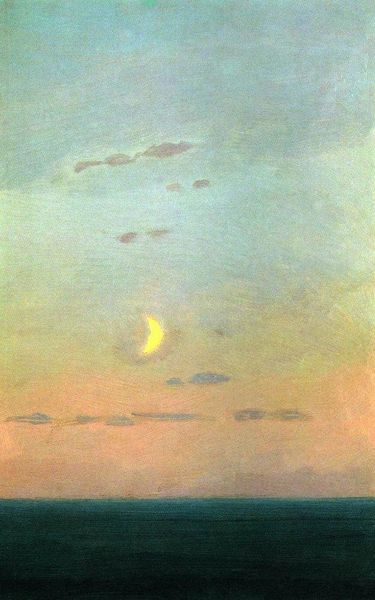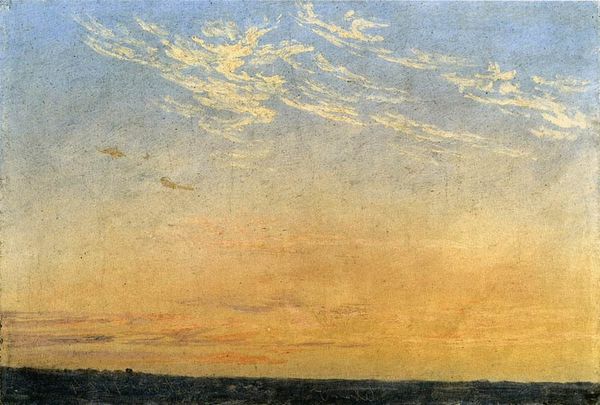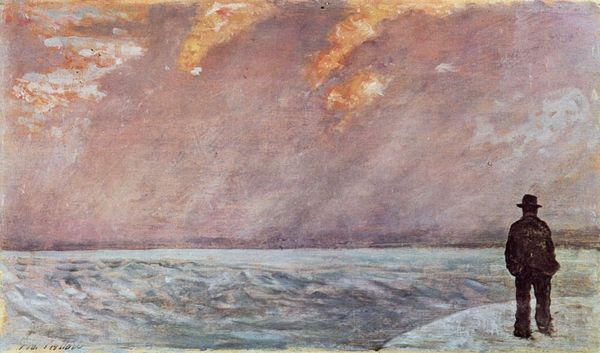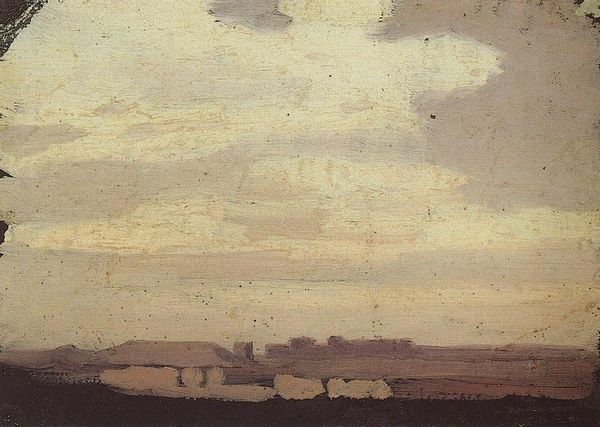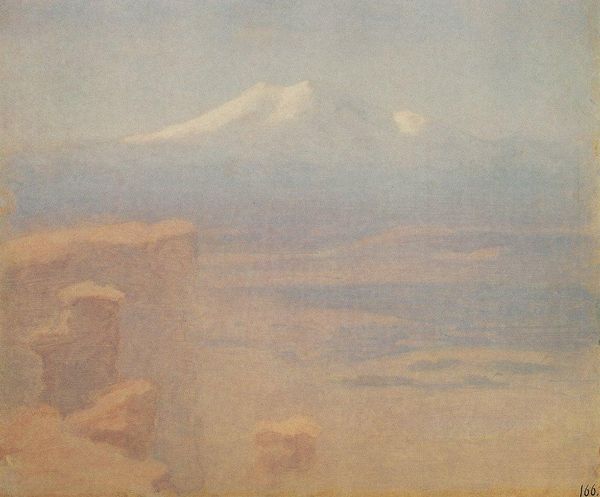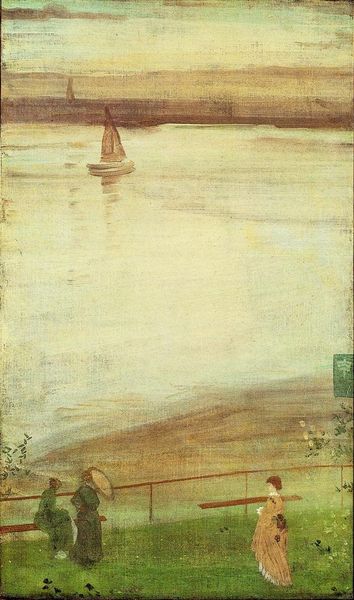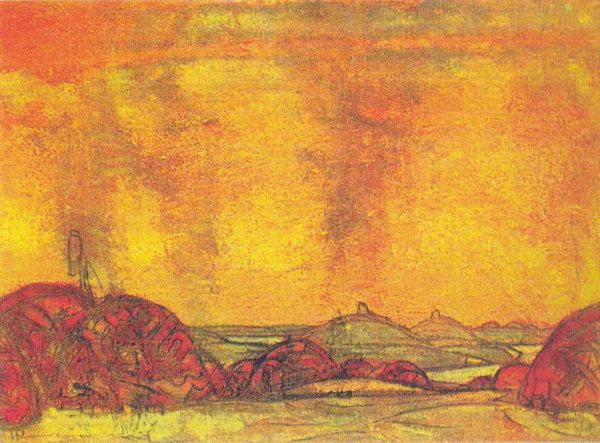
painting, oil-paint
#
allegories
#
abstract painting
#
symbol
#
painting
#
oil-paint
#
landscape
#
charcoal drawing
#
abstraction
#
symbolism
Copyright: Public domain
Curator: Let's turn our attention to Mikalojus Konstantinas Čiurlionis's "Deluge (II)" from 1904. Editor: My immediate reaction is one of submersion; a profound sense of being enveloped by warm yet melancholic hues. Curator: That's interesting. Given Čiurlionis's interests in the spiritual, social and political upheavals of his time, particularly in Lithuania, I'm drawn to interpret this flood not just as a natural disaster, but perhaps as a symbolic reckoning with established power structures. This could reflect anxieties around empire and cultural identity, particularly within early 20th-century Lithuanian society. Editor: I see that. Though my gaze keeps drifting to the structure; the way he layers ochre and sienna in what seems almost like atmospheric perspective, leading to an ambiguous horizon. The pyramidal form in the background—is it a mountain, or just a trick of the light? Curator: It’s this deliberate ambiguity that enhances the allegorical potential, I think. While his style often resonates with Symbolism, the narrative aspect is equally compelling. In his era, ideas surrounding national revival were deeply entwined with a yearning for social reform. Considering the era, we might explore his personal spiritual beliefs which intersect here with societal yearnings. Editor: Perhaps. Yet even divorced from that sociopolitical context, there’s a undeniable pull in the formal composition itself. The density of the lower registers gradually yields to lighter tonalities at the top—creating a visual metaphor for ascension, irrespective of the specific thematic narrative. Curator: True, and his choices of oil paints evoke that strong sense of timelessness and enduring meaning; it transcends specific historical readings, which makes the experience relatable, still relevant today. Editor: Absolutely. It demonstrates how art, regardless of its original intention, can evoke a multitude of interpretations just through the basic visual vocabulary it uses. It makes me see composition in painting differently. Curator: For me, it reveals the way social and cultural unrest becomes woven into art itself—how historical forces shape visual expression even when artists engage in abstraction. "Deluge (II)" stands as both artwork and mirror.
Comments
No comments
Be the first to comment and join the conversation on the ultimate creative platform.
